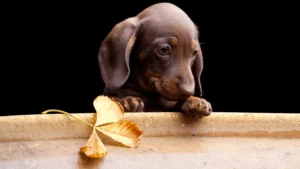Blueprint for Success: Building the Perfect Rabbit Hutch
Build the ultimate home for your bunny! Follow our blueprint for success and create the perfect rabbit hutch. Get started today
If you are considering getting a rabbit as a pet, one of the most important things to consider is their housing. A well-designed and well-constructed rabbit hutch is essential for your rabbit’s health and well-being. Here’s a blueprint for building the perfect rabbit hutch:
1. Size
As mentioned earlier, the minimum recommended size for a rabbit hutch is at least 12 square feet of living space per rabbit. This means that the hutch should be large enough for your rabbit to move around freely, stretch their legs, and stand up on their hind legs without their ears touching the top of the hutch.
2. Material
The material of the hutch is also important. It’s best to use untreated wood or plywood for the frame, and then cover it with wire mesh or hardware cloth to provide ventilation and security. Avoid using pressure-treated wood, as the chemicals can be harmful to your rabbit.
3. Flooring
The hutch should have a solid and waterproof floor to protect your rabbit from moisture and cold. You can use vinyl flooring or linoleum, or you can use untreated wood and then cover it with a layer of waterproof paint.
4. Roof
The hutch should have a sloping roof to prevent rain and snow from accumulating. You can use shingles or corrugated metal for the roof, or you can use a tarpaulin or heavy-duty plastic sheeting.
5. Doors
The hutch should have a door that’s large enough for you to access the inside easily, but small enough to prevent your rabbit from escaping. It’s best to use a latch or a lock to secure the door.
6. Bedding
Your rabbit will need a soft and absorbent bedding material to keep them comfortable and dry. You can use straw, hay, wood shavings, or recycled paper bedding.
7. Accessories
Your rabbit will appreciate a few accessories in their hutch, such as a litter box, a water bottle or bowl, and a feeding bowl. You can also add a few toys or chewable items to keep your rabbit entertained and stimulated.
8. Location
Finally, it’s important to choose a suitable location for your rabbit hutch. It should be placed in a shaded and sheltered area, away from direct sunlight and strong winds. You should also ensure that the hutch is placed on a level and stable surface to prevent it from tipping over.
In conclusion, building the perfect rabbit hutch requires careful planning and attention to detail. By following this blueprint, you can create a safe, comfortable, and attractive home for your rabbit that will provide them with years of happiness and health.











